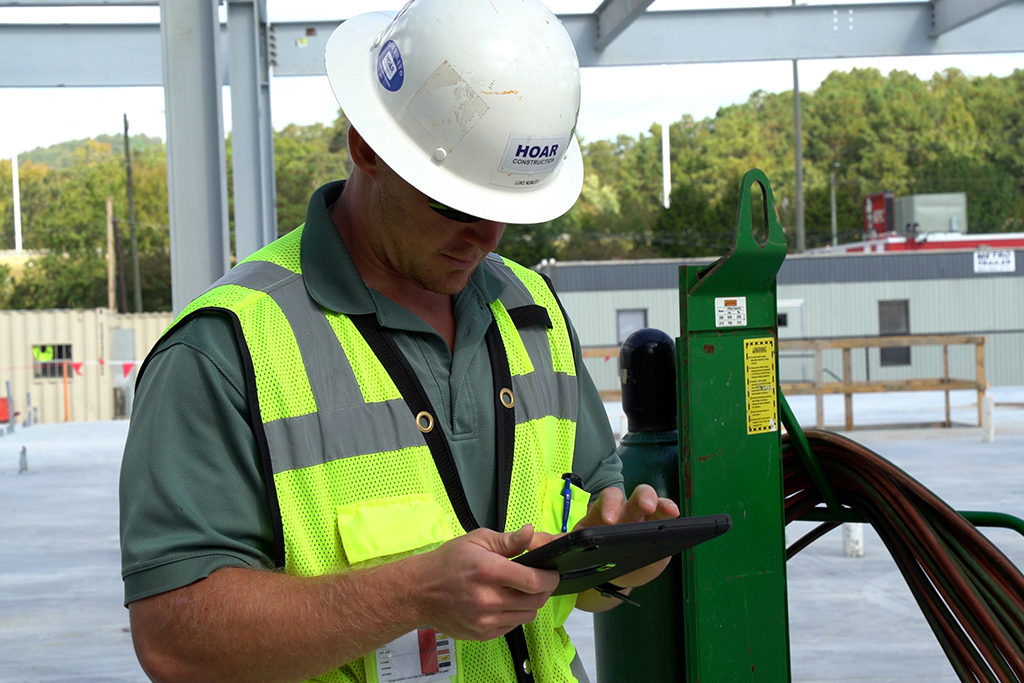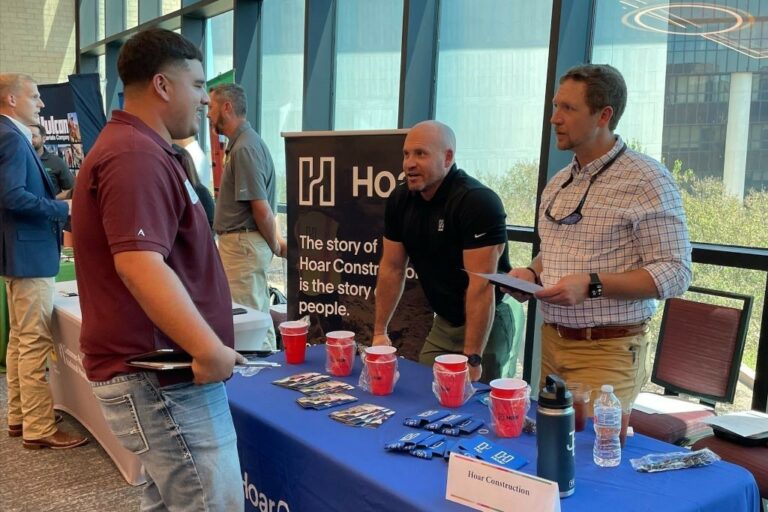
What are some things that seem normal, but wouldn’t a year ago? Wearing masks comes to mind first. Staying six feet apart. Communicating by video instead of face to face. That last one is a big change for me. Whether it’s using FaceTime to let my daughter visit with her grandparents or using online platforms to meet with clients, video communication is a part of my everyday life. I am very much looking forward to a time when I can replace some of those instances with in-person interaction — I’ll take a family gathering over FaceTime any day! But I think some of the shifts in the way we meet and communicate will carry on into the future and can add value into our projects and client’s bottom line.
Construction is all about communication. From meetings with the owner and architect to daily on-site safety huddles, we need to be able to coordinate and talk to every member of a project team on a consistent basis. Healthcare construction requires even more communication simply because the building process involves more systems, code requirements, and inspections. One healthcare project can require dozens of individual inspections before the building can be opened and operational. Unless the inspector works just down the road, that’s a lot of travel, time, and expenses added into your budget and schedule.
That brings me back to the benefits of virtual communication. When the pandemic hit in 2020, healthcare construction became more vital than ever. Hospital systems needed to expand, renovate, or adapt their campuses to accommodate the influx of patients and need for specialized care. But of course, travel was severely restricted and social distancing requirements were in place on our projects across the country. To keep construction moving forward, our healthcare teams used an online meeting platform to hold virtual inspections. Over the past year, we’ve developed a virtual inspection process that allows us to secure approvals, meet schedule deadlines, and deliver safe, quality healthcare buildings on time. Here’s some of our best practices we’ve learned through our experience:
1. Assign Your Team Roles
To give state healthcare inspectors the detailed views and access to your project they need to issue an approval, you need to be prepared and have designated team members to perform key roles. It’s not enough to dial up your inspector on FaceTime and walk around the site showing them different angles. On our inspections, we have one person run the computer to show documents and manage the meeting and multiple people assigned to locations in the field with cameras to show the work performed. One inspection we held consisted of three separate document and camera teams which allowed the inspectors to efficiently conduct a complex and thorough inspection, from hundreds of miles away.
2. Get Organized
One benefit of an in-person, on-site inspection is you can walk around with the inspector and flip through your documents as needed to answer their questions. In contrast, we’ve probably all experienced some of the awkwardness or even frustration that can come with communicating through screens. If a project team can’t quickly access the right documents or files an inspector needs, it slows down the inspection and can cause everyone involved to lose focus. Know what documents you will need to show, have them ready, and practice sharing your screen and quickly pulling up different files. That leads me into my next point.
3. Practice, Practice, Practice
Our standard virtual inspection process includes a full run through the day before. It only takes us 30 minutes to an hour but gives everyone involved on our end the confidence and experience to make the actual inspection go seamlessly. One of the benefits of virtual inspection is the time you save by eliminating travel, so the inspection needs to be as efficient as possible to maintain that advantage.
4. Check Your Tech
It may seem like a no brainer, but holding a virtual inspection requires the right pieces of technology — a high quality camera or smart phone with clear photo capabilities and a strong Wi-Fi connection are key. If you’re renovating a hospital and trying to run your inspection off their Wi-Fi, the connection might not be strong enough or being used by too many people. We’ve had to engage our IT department several times to boost the signals at our location. Then, during our walk throughs we can confirm that the signal is strong enough to host virtual inspections with users logging in from multiple sources.
Hospital construction requires multiple phases of inspection at the state level, many more than required in commercial development. That’s why I believe we can expect to see a rise in the use of virtual inspections in future healthcare projects. Further, I think we will start to use online meeting capabilities to hold design reviews, site visits with the owner, and end user reviews with our clients and their staff. We recently used video capabilities to allow one client and their medical staff to review a mockup of a patient room to ensure that everything was at the right heights and locations. This kind of technology allows everyone involved in a project to be engaged in the project, up to date on current progress, and get the benefits of visiting the site faster and with less expense. More communication and collaboration while creating value in the schedule and budget — who doesn’t want that?

